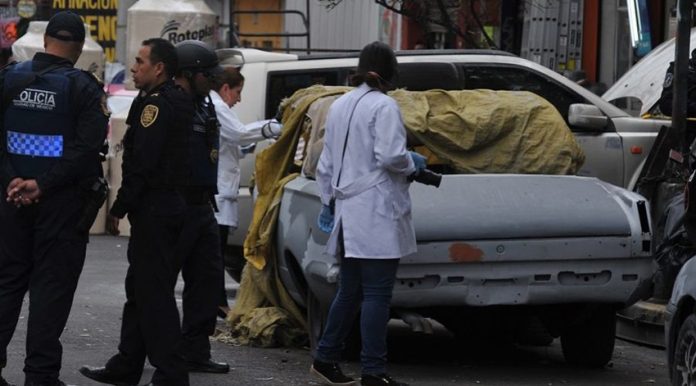This year remains on track to be the most violent in Mexico’s recent history after the second highest number of homicide cases in the past 20 years was recorded in September.
There were 25,394 homicides in the first nine months of 2018, 18% more than the 21,460 recorded in the same period of 2017, which was the most violent year in at least two decades.
Authorities opened 2,542 new murder cases last month in connection with 2,894 deaths.
The only month of the past 20 years in which authorities started a higher number of homicide investigations was July of this year.
In addition to the 2,894 homicides recorded last month, there were also 71 victims of femicide — women and girls who were killed on account of their gender.
The total number of deaths — 2,965 — is 1% higher than the figure recorded in August.
Homicide rates in Mexico have surged by more than 85% over the past three years, a period which coincides with the second half of President Peña Nieto’s six-year term.
In his final report to the nation last month, Peña Nieto said that his government “didn’t achieve the objective of restoring peace and security for all Mexicans in every corner [of the country].”
However, he sidestepped total responsibility for the security situation, instead blaming high levels of violence on the inability of municipal and state police forces to combat small criminal gangs that emerged after cartel leaders, such as Joaquín “El Chapo” Guzmán, were captured.
This year’s homicide figures equate to an average of four deaths per hour or 94 per day.
Colima recorded the highest per-capita homicide rate between January and September, with 58.8 cases per 100,000 residents.
Baja California was next, with 56.6 cases per 100,000 residents followed by Guerrero with 46.7; Chihuahua 37.4; and Guanajuato 32.5.
Guerrero recorded the highest femicide rate, with 2.3 victims per 100,000 women followed by Nuevo León and Zacatecas, with 2.18 and 2.17 respectively.
President-elect López Obrador, who will take office on December 1, announced last week that Mexico will be divided into 265 regions as part of the incoming government’s security strategy.
Between 300 and 600 members of the army, navy and Federal Police will be deployed to each region depending on their population and crime rate, he said.
López Obrador also said that his government’s security strategy will involve combating the root causes of violence by stimulating economic growth, creating jobs, providing greater education opportunities and generating well-being.
Source: Animal Politico (sp)
